We hope that each of you, our readers, will enjoy and appreciate this article we present about these 4 Magical European Moths. It was certainly our pleasure to compile the information for you. May it provide you with both education and increased awareness.
These few species listed herein represent only a portion of the natural wonders found throughout the region, though. Yet, it’s our belief that they serve as excellent representations of the wonders found here. Check out some of our other articles for similar marvels.
Hummingbird Hawkmoth
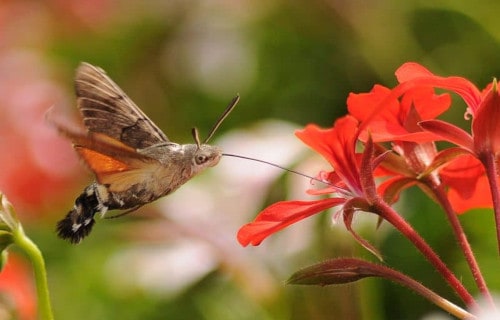
Hummingbird Hawkmoth Fact
- Starting off this compilation of 4 Magical European Moths we present the distinctive product of evolution named the Hummingbird Hawkmoth.
- This Lepidoptera primarily goes by the common name that we’re using herein. Entomologists, however, know the insect better by its official scientific name. That, though, is the hard to pronounce term of Macroglossum stellatarum.
- Whatever name one chooses to use to refer to it, it’s a fabulous creature. The first recognition of it as a separate and distinct species, meanwhile, occurred in the year 1758. It further owes its acknowledgement to a famous name in science.
- That’s because the famous Swedish botanist, Carl Linnaeus, made that original scientific classification of the species. He also published it in the 10th edition of his Systema Naturae. This gives the insect a historic place in the annals of entomology.
- Its relative fame doesn’t end there, though. That’s due to the fact that it held a place in important, groundbreaking scientific studies. More precisely, in 2018, a lengthy and detailed project completed the sequencing of its entire genome and mitogenome.
- There’s also more good news. For the moment, the Hummingbird Hawk Moth appears to be maintaining a sizeable and stable population. This delightful trend further seems to hold true throughout the entirety of its natural range.
- The IUCN, therefore, presently has no listing for it on the organizations Red List of Threatened Species. The species nonetheless could face threats to its existence in the future. That’s because habitat loss and climate change continue to escalate.
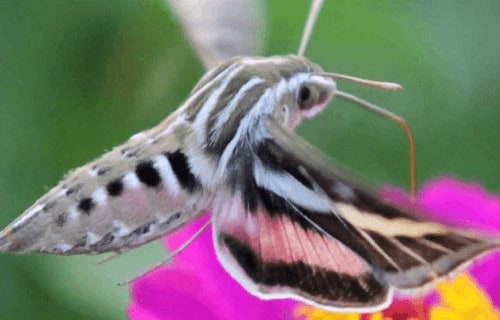
Hummingbird Hawk Moth Physical Description
The magnificent Hummingbird Hawk Moth adroitly proves that size holds no relation to beauty in Nature. This holds true since it only qualifies as a medium-sized type of moth, in terms of wingspan. Also unusually, it shows no noticeable sign of sexual dimorphism.
This lack of visual difference between the genders extends to both size and appearance. As a result, mature specimens of both sexes attain an average wingspan of about 1.8 in (4.6 cm). While not large, those wings nevertheless impress one, just due to their beauty.
The forewings typically show brown and a crisscrossing of thin black lines. The hind wings of the arthropod, though, usually show orange and display a black edge. Although the wings grow medium-sized, the body remains proportionately larger than related species.
The proboscis of the amazing Hummingbird Hawk Moth, however, developed in a remarkable manner. It’s highly elongated, again mimicking the hummingbird. The arthropod even possesses a short tail tipped with numerous soft, brush-like bristles.
- Kingdom: Animalia
- Phylum: Arthropoda
- Class: Insecta
- Order: Lepidoptera
- Family: Sphingidae
- Genus: Macroglossum
- Species: M. stellatarum
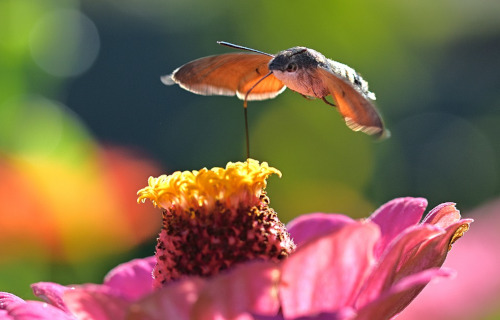
Hummingbird Hawk Moth Distribution, Habitat, and Ecology
The marvelous Hummingbird Hawk Moth possesses yet another strong evolutionary advantage. That’s the fact that it evolved as native to a huge portion of the globe. More precisely, its natural distribution covers much of Asia, Africa, and also Northern Europe.
Even beyond that, most individuals develop as relatively strong fliers. As a result, the species appears virtually anywhere in the hemisphere during the summer. This represents yet another manner in which it differentiates itself from the majority of its peers.
Adding even more to its resume, the amazing invertebrate also evolved as highly adaptable. Due to that trait, it often inhabits a wide variety of habitats. These include regions as diverse as forests, meadows, parks, and even private gardens around human habitations.
Unfortunately for its fans, though, it has a short lifespan. Because of this trait, however, it developed another helpful trait. The marvel of Nature breeds quickly. Therefore, anywhere from 2-4 generations are born in a single season. This often depends on the region, as well.
The mature adults of the Hummingbird Hawk Moth feed exclusively on nectar from plants such as the Red Valerian and Honeysuckle. Thankfully, the species itself, however, has few natural predators. This mainly holds true due to its incredible camouflage.
Death’s-head Hawkmoth
Death’s-head Hawkmoth Facts
- Appearing next in this article about 4 Magical European Moths is the amazingly evolved creature understandably called the Death’s-head Hawkmoth.
- Distinctively, the eye-catching common name for this amazing Lepidoptera remains that of the unique term used. Perhaps most notably, though, the term actually serves as the common name for a total of three species within the genus Acherontia.
- The distinctiveness of these three forms, however, does not simply stop there. That’s because, in addition to the astonishing obvious physical trait, other facts also set it apart from most other types of moths. These, in fact, are fascinating in their own right.
- First of all, the astonishing and highly unusual Death’s-head Hawkmoth evolved the ability to emit a high-pitched chirp. This action only occurs, though, when the arthropod feels either threatened or irritated. Few insects can make sounds internally.
- Secondly, all three varieties also evolved as relatively rapid fliers. In point of fact, one of them, the Acherontia atropis, constitutes the fastest known moth on earth. That’s because individuals of that species can reach speeds of up to 30 mph (48 kph).
- The IUCN, furthermore, does not currently have a listing for any of the three varieties. That’s surprising, given the fact that each of them qualifies as quite rare. Like many creatures, it obviously faces threats such as climate change and habitat loss.
Death’s-head Hawkmoth Physical Description
Not surprisingly, physical differences naturally exist between the different types of Death’s-head Hawkmoth. All three types, however, also as is to be expected, remain quite similar in terms of appearance. Many general descriptions therefore apply to them all.
It must be pointed out, though, that measured adult wingspan varies significantly, even within the same gender and species. While not unknown, this trait definitely qualifies as uncommon. Due to this fact, adults range in width of wings from 2 – 8 in (5 – 20 cm).
In addition, like the majority of Lepidoptera, this marvel of Nature displays a moderate degree of sexual dimorphism. As a result of this physiological trait, in its case, females generally develop slightly larger than the males. These also tend to be bulkier in shape.
The body of the magnificent Death’s-head Hawkmoth also displays a comparatively thick, bullet-shaped form. The two forewings further develop long and narrow. Yet the hindwings, however, appear much shorter, like most related forms of invertebrate.
Its coloring also varies, quite understandably. But these typically consist of combinations of shades of brown, black, gray, and yellow. The astounding presence of a human skull-like marking on the back of the thorax, however, represents its most memorable feature.
- Kingdom: Animalia
- Phylum: Arthropoda
- Class: Insecta
- Order: Lepidoptera
- Family: Sphingidae
- Genus: Acherontia
Death’s-head Hawkmoth Distribution, Habitat, and Ecology
The species bearing the common name of Death’s-head Hawkmoth also have different habitat ranges. That alone sets them apart from many of their peers. One appears in parts of Europe. The other two members of the genus, however, live in scattered sections of Asia.
All forms of this amazing insect, furthermore, seem to be highly adaptable to varying habitats. As a general rule, though, the insect appears in regions with substantial foliage. This most commonly includes temperate forests, as well as parks, and even home gardens.
The larval form of the Death’s-head Hawkmoth stays on or near a single host plant. These it feeds on voraciously. It shows no preference for type of host. The adults show a preference for honey, in addition to fruit. As a result, adults often raid the hives of honeybees.
Its own natural predators, meanwhile, consist of the same as other moths. These mainly consist of the various birds found in its region. Many bats also love to feed on it, though. Finally, the chirping ability it evolved serves the intended purpose of deterring these.
Army Green Moth
Army Green Moth Facts
- Our next choice for inclusion in this gathering of 4 Magical European Moths is the beautiful insect bearing the name of the Army Green Moth.
- This magnificent creation of Nature and evolution frequently goes by the descriptive moniker for the obvious reasons. That’s hardly the only term by which it’s known, though. It’s also referred to by the common name of the Oleander hawk-moth.
- Professionals, however, typically know it by yet another name. Thankfully, that’s a relatively simple term as such things go. That’s because in scientific circles it’s better known by its formal name of the Daphnis nerii. By either name, it’s a beautiful species.
- It further owes that specific technical name to the eminent Swedish botanist and zoologist Carl Linnaeus. That highly respected researcher recorded the first formal acknowledgement of the Arthropod as a separate and distinct species in the year 1758.
- The insect made its first appearance in scientific literature following that work. The renowned researcher included the newly recognized species in the 10th edition of his Systema Naturae. That appearance occurred in the same year as its acknowledgement.
- Most fortunately, the amazing Army Green Moth seems to be maintaining a population base that’s both stable and sizeable. In that respect it’s more fortunate than many of its relatives. The IUCN therefore currently has no listing for the creature on its Red List.
- The beautiful Lepidoptera nevertheless does face several potential threats to its own continued existence. These naturally include habitat loss due to human expansion. The wonder of Nature likely faces its greatest threat, however, in the form of climate change.
Army Green Moth Physical Description
The aptly-named Army Green Moth fully merits the degree of attention it receives from those lucky enough to encounter it. Although size is irrelevant to such things, it nonetheless impresses in that respect as well. That’s true since it’s far larger than many of its cousins.
It additionally distinguishes itself from the great majority of Lepidoptera in a surprising way. That’s because of something it does not display. That’s due to the fact that, unlike most moths and butterflies, it shows no noticeable degree of the trait of sexual dimorphism.
Individuals of both genders therefore manifest the same physical characteristics, including simple physical size. Remarkably, this insect attains a significant wingspan. Though this aspect varies between individuals, regardless of gender, it ranges from 3.5 – 5.1 in (9 – 13 cm).
Precise color patterns also vary from specimen to specimen, of course. Overall, however, this typically consists of a mosaic of olive and dark green backgrounds. Lighter cream colored streaks also run through the surface of the wings, and even such shades as violet.
Mature adult individuals, meanwhile, display a greenish head, with reddish-brown on the front and a grayish band on the reverse. The thorax also displays a green hue, with the collar outlined in gray. Distinctly, it also has a triangular gray patch present on the body’s top.
The abdomen of the Army Green Moth generally manifests a paler shade of green. Its forewings stand out due to a combined dark green background with both a black spot and a white patch at the base. The hindwings, though, usually appear somewhat darker in color.
- Kingdom: Animalia
- Phylum: Arthropoda
- Class: Insecta
- Order: Lepidoptera
- Family: Sphingidae
- Genus: Daphnis
- Species: D. nerii
Army Green Moth Distribution, Habitat, and Ecology
Fortunately, the fabulous Army Green Moth evolved as native to a remarkable broad swathe of the globe. It also tends to migrate significant distances, which places it in other parts of the world, as well. The natural marvel mainly appears natively across Africa and Asia.
From this home range, the intrepid Arthropod engages in regular migrations that take it to many connecting regions. This includes the southern and eastern portions of Europe in the summer. Individuals sometimes even travel as far to the north as parts of Scotland.
Probably due to actions of man, the invertebrate has also become naturalized to Hawaii, in the United States. In all the regions it appears, it displays marked habitat preferences. This holds true for both its primary and migratory range, as well as naturalized regions.
Given those areas of the globe, its preferences come as no surprise. Individuals make their home in warm relatively moist regions. Though not limited to, it often frequents areas of scrublands and highlands. In Hawaii, the Lepidoptera quickly adapted to tropical areas, too.
Like many of its relatives, this product of ages of evolution prefers regions with copious foliage. This instinctive tendency serves several purposes in its life cycle. These understandably include natural shelter as well food for the larval form of the insect.
That’s due to the fact that if further follows the pattern of its genetic cousins. The adults principally feed on the nectar of a wide variety of flowers, which such a habitat provides. Most nevertheless display a strong preference for honeysuckle, jasmine, and petunias.
The caterpillar form of the Army Green Moth, however, distinguishes itself. This holds true because of its diet. As its alternate common name implies, this form mainly consumes the oleander plant. Though highly toxic to most species, these caterpillars are immune.
Elephant Hawk Moth
Elephant Hawk Moth Facts
- Completing this compendium of the these 4 Magical European Moths comes the dazzling Lepidoptera called the Elephant Hawk Moth.
- The unusual term listed in this article serves as only one of the common names applied to this magnificent Lepidoptera. The other term often used for it’s actually very similar in nature. That’s the redundant term of Large Elephant Hawk Moth.
- Its formal scientific name, meanwhile, remains that of the hard to pronounce Deilephila elpenor. The highly respected Swedish botanist and naturalist Carl Linnaeus made that first recognition of the species. He accomplished this in the year 1758.
- Both of the distinctive, and confusing, common names spring from the same source. That’s because their origins lie in the appearance of the larval form of the invertebrate. This occurs because many people feel this form resembles the trunk of an elephant.
- The fabulous Elephant Hawk Moth also stands out from many of its peers for another, unrelated reason. For the moment, its population numbers appear to be both sufficient and stable. This further holds true throughout the entirety of its range.
- The IUCN, therefore, presently has no listing for the arthropod on its Red List of Threatened Species. The marvelous creature nonetheless likely faces several potential threats. Like many species, these primarily consist of habitat loss and climate change.
Elephant Hawk Moth Physical Description
The magnificent Elephant Hawk Moth, despite the term, impresses for reasons other than sheer physical size. That’s because, from that perspective, it’s only average-sized. It does, however, differ physically from most moths in one certain way.
That’s due to the fact that, unlike many related creatures, it displays no appreciable sexual dimorphism. That’s not to say that no differences in the genders exists, of course. Physical variations between the sexes do occur, but usually remain too small to notice.
Typically, a mature individual has a wingspan measuring roughly 2-2.8 in (50-70 mm). This variety of Lepidoptera also evolved as spectacularly colored. In point of fact, the gorgeous insect appears to the eye to shimmer with green and red when in motion.
The thorax and head of the Elephant Hawk Moth, furthermore, developed as segmented. This section of the body also develops as quite slender, at least when compared to the rest of its body. Its legs also generally develop as extremely thin and colored bright white.
- Kingdom: Animalia
- Phylum: Euarthropoda
- Class: Insecta
- Order: Lepidoptera
- Family: Sphingidae
- Genus: Deilephila
- Species: D. elpenor
Elephant Hawk Moth Distribution, Habitat, and Ecology
The visually stunning Elephant Hawk Moth has yet another factor working in its favor. That’s because it evolved as endemic to a comparatively wide region of the globe. Amazingly, this zone of habitation actually extends through large sections of both Europe and Asia.
Within this extremely large zone, it appears in regions including Ireland and Great Britain, as well as much of, Russia. It may also be present in northern parts of the Indian subcontinent, Korea, and Japan. Evidence for this exists, but remains inconclusive for now.
It’s also been introduced into other parts of the world. This occurred via the actions of man, both intentionally and unintentionally. The gorgeous arthropod therefore now appears even in portions of North America. There, it’s been spotted in British Columbia, in Canada.
In most portions of its native range, the adults appear from May to July. The marvel of Nature also quite often appears in urban settings in the evening. There, it’s frequently observed feeding in parks and even home gardens. It’s therefore proven to be adaptable.
The caterpillars further live from July to September, at which time when these usually pupate. The remarkable arthropod will also sometimes produce two broods in a year. This provides the invertebrate a distinct advantage over many related species.
The adult Elephant Hawk Moth primarily feeds at night in the wild. It modifies that in urban areas, however. Like many types of moth, though, it has preferred food sources. Thus, it often takes nectar from garden plants like honeysuckle and petunias.
4 Magical European Moths
We hope that each of you enjoyed reading, and hopefully learning from, this article we’ve written about these 4 Magical European Moths. It’s also our hope that doing so has left you with either a new or renewed appreciation for such wonders of Nature.
Unfortunately, however, many of their kindred around the world now find themselves facing strong threats to their continued existence as a species. Many of those dangers, in fact, stem from the actions of mankind. We must do all we can to protect and preserve them all.
Check out our other articles on 5 Rare Mind-Blowing Cloud Types, Wonderful Wild Cats of the World, 3 Incredibly Intriguing Iguanas, Africa’s Many Geological Masterpieces
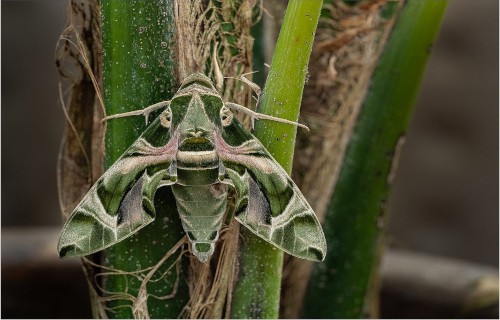
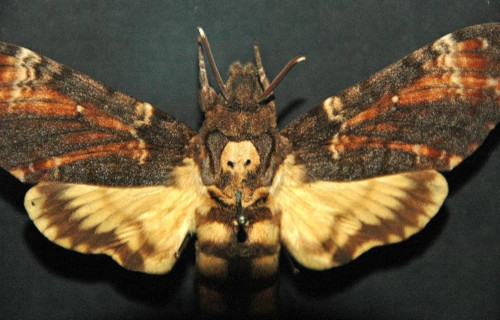
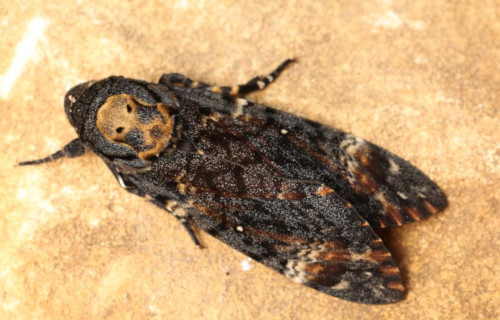
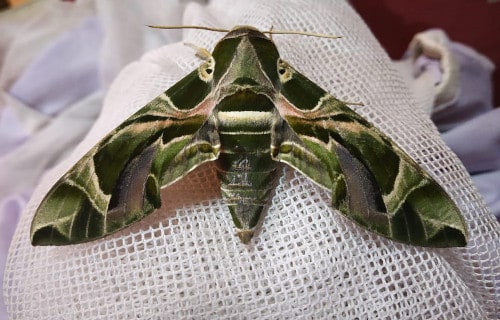
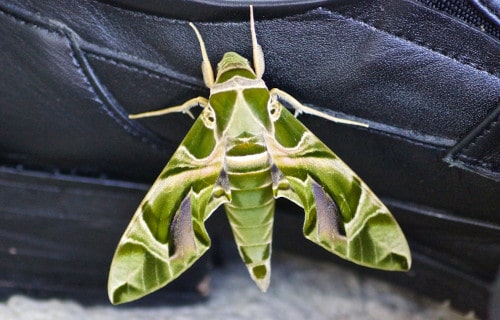
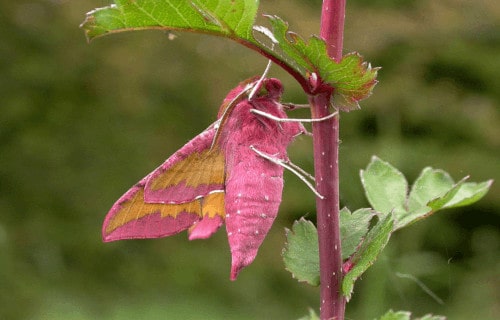
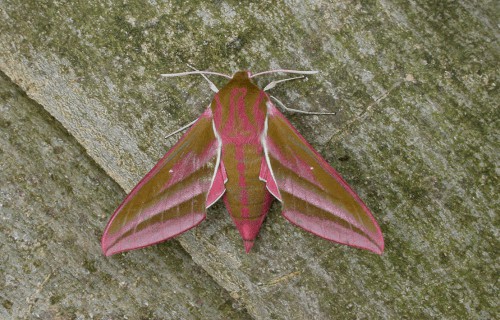
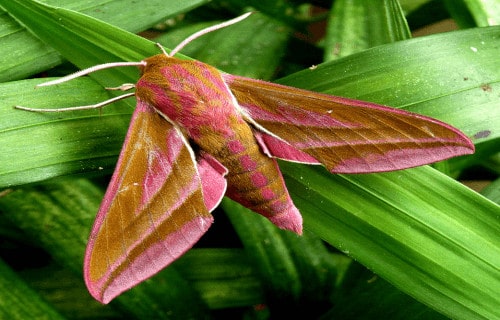









Leave a Reply